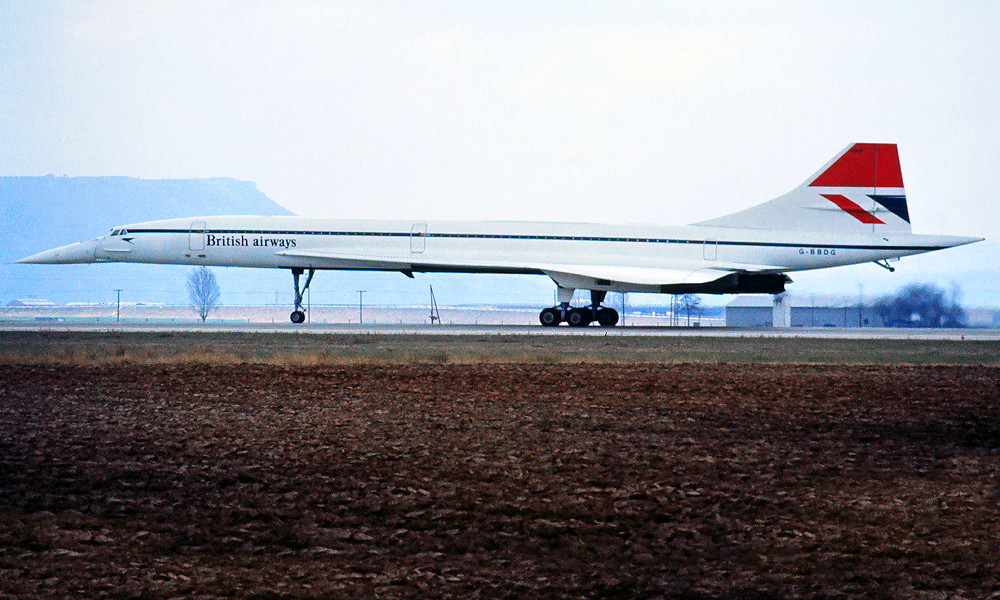G-BBDG. British Aircraft Corporation Concorde 102. c/n 13523-202.
This aircraft was a pre-production model built by British Aircraft Corporation at the Filton, Bristol plant. It was entered onto the British Aircraft Register as G-BBDG (Certificate of Registration, R.10002/1) on August 7, 1973 to the Minister of Aviation Supply. It flew for the time on February 13, 1974. The two production test aircraft (201 and 202) were different in many ways from their four predecessors, necessitating repeating certain work to obtain certification. It was really these two aircraft that did the bulk of the flying that allowed the final certification of Concorde for airline service. However, even though called production aircraft, they never went into service because the final version, as specified by the airlines, was different yet again although not in a way that affected handling or performance certification. Like the prototype aircraft, Delta Golf was fitted with a flight observers' station and test equipment in the forward cabin but the aft cabin was fitted with seats. Delta Golf was called a 'production aircraft' but never went into commercial service because the final version specified by the airlines was different yet again, although not in a way that affected handling or performance certification.
Another change was an extention of the control surface trailing edges (by around two inches) - a modification that many now feel was part of the reason for the rudder de-laminations seen on the fleet over the years. Delta Golf was the fastest production Concorde and in 1974 she became the first aircraft ever to carry 100 people at twice the speed of sound. After her final landing at Filton in December 1981 the aircraft was kept serviceable throughout early 1982 for any further development work or test flights that might be required. British Airways acquired the aircraft in 1984 and started using her as a major source of spare parts. To protect its investment and to keep her out of public view, British Airways constructed a special hangar at Filton for the aircraft in 1988. In 1995, Concorde G-BOAF's droop nose was damaged in a ground handling accident at Heathrow and British Airways decided to replace it with the droop nose on Delta Golf. The nose from 'Alpha Foxtrot' was then stored (but was later repaired at Brooklands Museum and fitted to Delta Golf in 2005). In 2002, long after Delta Golf's flying days were over, the airframe was used to test fit and certify new strengthened cockpit doors required by the authorities after September 11, 2001. In October 2003, Delta Golf was offered to Brooklands Museum for restoration and public display. Dismantled (and later reassembled) by a specialist contractor, her major sections arrived here by road in May and June 2004. With a comprehensive new Concorde exhibition in the rear passenger cabin and a representative British Airways Concorde interior installed in the front cabin, Delta Golf was opened to visitors in Summer 2006. G-BBDG was struck from the British Civil Aircraft Register on August 10, 1984 as 'permanently withdrawn from use'. On her permanent grounding G-BBDG had flown a total of 1,282 hours and 9 minutes. It flew a total of 374 supersonic speed cycles for some 514 hours and 9 minutes. |
 |
G-BBDG. British Airways - in the original livery at an unknown airport, March 1975. (R. N. Smith Collection Copyright Image 1926-035.) |